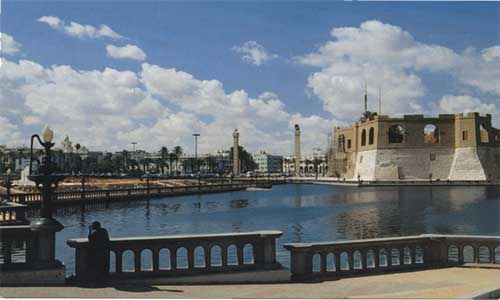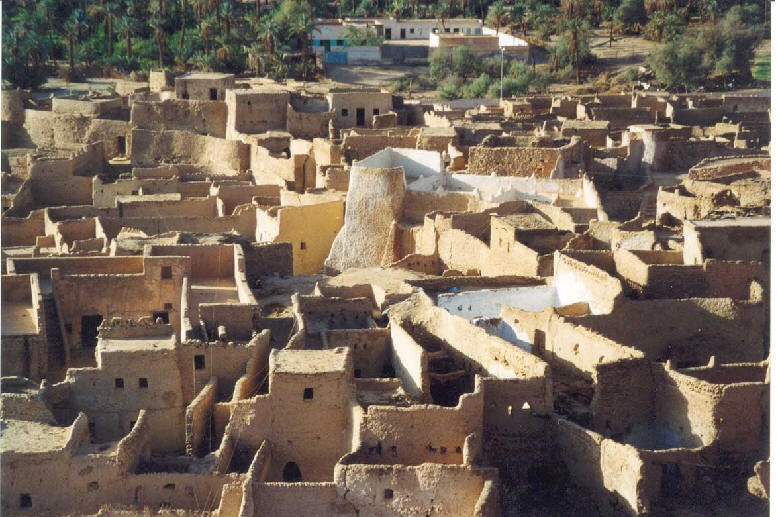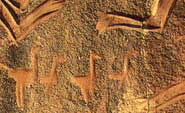|
|||||||||||||||||||||||||||||||||||||||||||||||||||||||||||||||||||||||||||||||||||||||||||||||||||||||||||||||||||||||||||||||||||||||||
Libyan wonders
Forged
out of the North Africa coastline, Libya is a country of tremendous
variety, full of contrast offering classical cities and desert
lovers an opportunity to discover some of the greatest Roman- Greek
cities in the world and the astonishing vistas of the Sahara desert.
On the coastal band of the Mediterranean See close to the
capital Tripoli stand the breathtaking Roman cities of
Tripolitania " Three- cities, Oea -Tripoli, Leptis Magna
& Sabratha " while further east in the stunning area of the
Green Mountain " Aljabel Al-Akhdar " are the magnificently preserved
Greek relics of Cyrenaica , " Cyrene, Apollonia, Ptolemais ,
Tukrah and Berenica ".
For Sahara desert lovers, Fazan
desert and the mountainous region of Tadarart Acacus of
the Libyan Sahara offer an unassailable attractions with its huge
sand dunes and wild, engravings and prehistoric cave paintings of
various styles scattered throughout almost all the valleys ,
representing the various cultural groups that lived there during
those long periods of prehistory…

Tripoli
Phoenician Oea, the capital and
main port of Libya is a modern city with a population of about 1
million. Its old city " The Medina " is at its center, next to the
harbor on a site continuously occupied since the arrival of Phoenician
500 BC Although no relics of the Phoenician settlement remain, there
are traces of Roman times including the Arch of Marcus Aurelius (163 AD)
constructed entirely of marble. Other sites of interest include Assaraya
Al-Hamra Castle with the wonderful National Museum, built in the 1st
century , and the old medina notable for Roman column embedded in each
corner building. The medina contains interesting ancient buildings dated
back to 17th century, souks and mosques, of which the interior of Karamaly
Mosque is particularly spectacular.

Location: 123 km. east of
Tripoli

World famous and one of the most extensive
archaeological sites in the Mediterranean. Originally a Phoenician port
founded at the start of the 1st millennium BC to trade with the Germantes from Fazan region, Under Roman influence from the fall of
Carthage in 146 BC, Leptis Magna was annexed to the Empire in the 1st
century AD and became one of the most beautiful cities in the Roman
world, specially during the reign of Septimus Severus (193-211 AD), who
was born in the city ( Leptis is the best example of Severan urban
development ). After the Arab domination in the 7th century ,the desert
sand took possession of the site .1982 as the site added to the world
Heritage list, excavation work started. Today a total of 30 major
monuments: Hadrian's baths, the Forum, the Severan basilica, the port,
the Liber Pater, Rome and Augusts Temples, the market place and the
theatre have been restored. Renovation of the 15000 seat amphitheatre is
almost complete.
Among the many sites of interest at Leptis Magna
are the Septimus Severus Arch, the Sports Ground, the Nymphaeum, the
Hadrianic Baths, the Colonnaded Street, the Severus Forum, the Severus
Basilica, the Theatre, the Harbor, the Circus, the Temples of Liber
Pater, Rome and Augustus, the Arch of Trajan and the
Market.

Location: 72 km. west of Tripoli, 140 miles south-east of Djerba (Tunisia)
Settled in
the late 6th century BC by the Phoenicians, Sabratha's development as a
Roman city began in the latter half of the 1st century AD. It reached
its peak in the 1s  t and 2nd centuries AD, particularly during the reign
of Septimus Severus, who was born in nearby Leptis Magna. Much of the
city was destroyed by earthquakes during the 4th century, and it never
fully recovered from a devastating earthquake which took place in 365
AD. The major of Sabratha monuments were built at the height of the
city's prosperity in the 2nd & 3rd centuries A.D. The theatre is the
most remarkable of these, with its colonnaded stage wall on three levels
and its low reliefs in pink and white marble, directly facing the sea
!!.
t and 2nd centuries AD, particularly during the reign
of Septimus Severus, who was born in nearby Leptis Magna. Much of the
city was destroyed by earthquakes during the 4th century, and it never
fully recovered from a devastating earthquake which took place in 365
AD. The major of Sabratha monuments were built at the height of the
city's prosperity in the 2nd & 3rd centuries A.D. The theatre is the
most remarkable of these, with its colonnaded stage wall on three levels
and its low reliefs in pink and white marble, directly facing the sea
!!.
Other monuments and areas of interest include the Temple of
Liber Pater, the Basilica of Justinian, the Mosaics of the House of Jason
Magnus, the Capitolium, the Temples of Serapis, Hercules and of Isis

Location: 230 miles app. south of Djerba (Tunisia), 170 miles app. south-west of Tripoli.

Nalut, located on an escarpment reached
by a series bends as you drive up Nafussa Mountain , Nalut is the site
of a fascinating grain store, 200 years old , , comprising hundreds of
chambers was used by families to store oil and grain .

Location: 630 km. south-west
of Tripoli
Described as the Pearl of the Desert, Ghadames is a
beautiful oasis town located on the edge of the Sahara close to the border
with Algeria and Tunisia. The old town of Ghadames is very picturesque,
famous for its unique architecture and its labyrinthine streets.
Interesting sites include the cultural museum, the Traditional House
richly decorated in local style, the Great Mosque, and the Main Square
once used as a slave market.
Outside of town is to be found Ain
al-Dibbane a salty lake but very attractive for a swim in hot days . There
is also huge sand dunes area for those who would like a taste the spirit
of the Sahara.
Ghadames is the starting point for the overland desert
route to Ghat traveling 3 days 4wd alongside the Algerian border.

Location: 1550 km. to the
South of Tripoli " 2DAYS DRIVE".

A Tuareg
desert town located deep in the Libyan Sahara at the entrance of Acacus
Ghat was a famous trading post for caravans crossing the desert, and a
thousand years ago was an active town.
Ghat may be reached by either a
tarmac road from Sebha around 585 km. or through the Sahara-rout from
Ghadames alongside the Algerian border,
3 Days 4wd driving
time.
Best time to enjoy your visit to the region is from Nov. to the
begging of Apr.
Yearly festival takes place in Ghat during the last
week of Dec. gives an experience of colorful ritual of Tuareg life, music,
song and dance.

Location:
South-western corner of the Libyan Sahara, east of Ghat.

An officially
designated natural museum, the Tadrart Acacus region offers spectacular
desert and mountain scenery. Rock paintings that extend back to 12,000
years shows the development of human societies and the animal life that
was once abundant in the Sahara, such as Giraffe and Elephant.
Acacus travel is by 4WD vehicles and nights are spent camping under
the stars.
Tours to the region do not take place between May and
August due to the intense daytime heat.
To get to the Acacus , either
you take the tarmac road as far as Ghat, the usual base for expeditions to
the region, or experience even more desert travel on a 3-day drive through
the Sahara from Ghadames to Ghat alongside the Algerian border.
A
visit to the Acacus is a never-to-be-forgotten experience.

Prehistoric Rock
Engravings

8000 years ago, the
Sahara was not like the scorched desert of today. It was a lush
savannah, inhabited by Crocodiles, Ostriches, Giraffes, and
hunter-gatherers who lived comfortably…
Mathendous excursion offers a
great opportunity to explore its gallery depicting hundreds pre-historic
engravings of animals, birds and arcane symbols. The carvings are
skillfully and beautifully executed which must have months to cave
without the aid of metal tools!.
Copyright ©2005 AL RWASI For Travel & Tourism